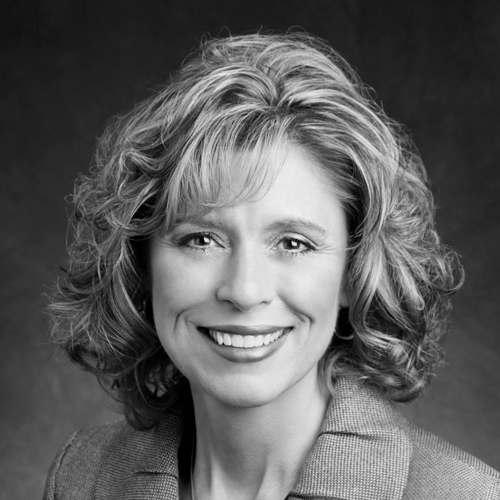
Despite tales of captains Nemo and Ahab, sailing nowadays is a sport that requires precise teamwork rather than crazed authoritarianism. Each crew member must know their tasks intimately and be able to perform them under any weather conditions at a moment’s notice.
That type of teamwork is remarkably similar to what Chris Hobson and his team at VF Corporation in Greensboro, North Carolina, provide for the company’s brands. And Hobson’s interest in sailing has made that comparison clear to him.
“My main passion right now is sailing,” says Hobson, who is vice president of business systems and CIO of the company’s global supply chain. “I recently gave a presentation to my team about the sailing life. I think it does teach a lot about innovation and creativity in terms of problem-solving and learning new skills. It actually relates closely to the role that we have within the company.”
That same innovation and creativity is constantly required when responding quickly and accurately to worldwide demand for continuously evolving fashion trends. The roughly thirty thousand supply chain employees worldwide use the latest data analytics and enterprise resource planning (ERP) software to deliver finished products to wholesale customers, VF retail locations, and e-commerce customers.
VF Corporation produces and distributes apparel, footwear, and accessories with its roughly two thousand suppliers and twenty-four of its own manufacturing facilities for brands that include Vans, The North Face, Timberland, Wrangler, and Lee. “We are one of the few apparel companies that still has its own internal manufacturing,” Hobson says. VF Corporation manufactures and sources more than five hundred million units a year and has grown through acquisition, most recently with Williamson-Dickie Mfg. Co. in October 2017.
Such growth has required an innovative strategy to obtain maximum scalability across its brands. The VF supply chain leverages the scale and global reach of the company to deliver high-quality products as efficiently as possible.
This is done by obtaining maximum synergies from the company’s distribution centers worldwide, most of which inventory multiple brands. Each brand has access to a wider supply chain with larger volumes than a single brand would by itself, which reduces costs significantly.
“Most of our brands have a strong e-commerce presence. But we also see a continued need for brick-and-mortar.”
Chris Hobson
For example, products from multiple brands can be grouped into one shipping container going to the same region. This allows the brands to focus on their customer connections and building an authentic brand experience for the consumer.
Maintaining consistency across different brands to realize synergies without affecting each brand’s identity is a balancing act. VF’s supply chain department harmonizes the sourcing of products to realize these synergies without eliminating the brand’s competitive advantage.
One of the ways that VF Corporation has achieved that consistency is through implementing a new platform of about seventy different software systems to act as a foundation to support the company’s future growth. That was a major project from 2012 to 2015, Hobson says.
About six hundred people from VF’s supply chain, technology, and business departments, along with sixty-five external partners, were involved. “We assembled a great team of people,” Hobson says. The new platform includes rolling out the latest ERP system, which consolidates financial and management systems along with wholesale, e-commerce, and retail orders.
“Having the data consistent across all the brands we see is critical for analytics going forward and for making effective business decisions in a timely manner,” he says.
Data analytics is critical because it gives VF’s employees a more holistic and accurate view of the company’s supply chain, which creates opportunities for improvement. Product forecasting has also improved, Hobson says.
The company is also reducing time it takes to get products to market by using new product-design technology, which requires less back-and-forth between product design and sample approval. Manufacturing and distribution systems are also improving time to market.
The speed required to get products to market is accelerating due to an increase in e-commerce demand. VF Corporation has roughly 1,500 owned and operated stores worldwide, multiple e-commerce presences, and a wholesale business.
“Most of our brands have a strong e-commerce presence,” Hobson says. “But we also see a continued need for brick-and-mortar. They get to see and feel the products.”
Balancing the needs of a complex supply chain has helped honed Hobson’s leadership skills. He stresses the importance of empowering a great team of employees with the right level of guidance and surrounding them with the best resources.
“The key to success is having a great team,” Hobson says. “It’s about setting goals for the organization that align with the corporate goals so everyone knows why they’re doing what they’re doing. I think if you get this part right, everybody wins.”
Wipro is a leading IT, consulting, and business process services company delivering winning business outcomes through its deep industry experience and 360 degree view of “Business through Technology.” By combining digital strategy, advanced analytics, and consumer-centric approach, Wipro’s Consumer Goods practice helps its clients build great brands and re-engineer the way they connect to their consumers. Wipro is a strategic partner to VF Corporation, and Chris has been a great leader and supporter of the Wipro-VF Corporation engagement. We would like to congratulate him on his many successes and wish him the very best in all future endeavors.
To know more about Wipro’s CPG practice, please visit http://www.wipro.com/industries/consumer-goods/.

